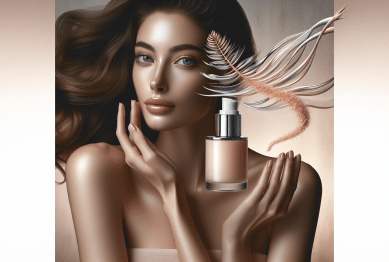Curious about how microneedling can help revitalise your skin and support a youthful glow? Explore what this wellness trend really involves, its safety nuances, cost factors, and the skin benefits many seek—plus things to consider before making a decision.
Understanding Microneedling and Its Rising Popularity
Microneedling has steadily gained ground in the wellness and beauty world. This technique, often called collagen induction therapy, uses fine needles to create tiny channels in the skin’s surface. Many believe these minute punctures stimulate natural collagen production and help skin look revitalized. It’s praised for potentially improving skin texture, reducing visible scars, and even minimizing fine lines, though individual outcomes can vary. As wellness enthusiasts increasingly search for non-surgical options, microneedling stands out for its balance between technology and simplicity.
The appeal of microneedling partly lies in its versatility. People explore it hoping to address a wide range of skin concerns, from acne scars and enlarged pores to stretch marks and uneven pigmentation. Unlike more aggressive resurfacing treatments, microneedling is often considered less invasive, yet still supports notable skin renewal over time. This gentle approach can attract those who are hesitant about deeper peels or laser procedures. As a result, professional skin clinics and even some dermatology offices now regularly discuss it with clients interested in boosting their skin’s resilience and brightness.
Another factor fueling the interest in microneedling is its perception as a more ‘natural’ approach. By leveraging the skin’s own healing abilities rather than introducing chemicals, it appeals to those seeking treatments with minimal foreign substances. As with any cosmetic procedure, it’s important to research practitioner credentials and understand the technique’s limitations. Information-rich guidance, not quick fixes, is critical for anyone considering adding microneedling to their wellness toolbox. Ongoing studies help clarify its most effective uses and potential risks (see https://www.ncbi.nlm.nih.gov/pmc/articles/PMC6382412/).
What Happens During a Microneedling Session?
The actual process behind microneedling fascinates many. Most sessions begin with a thorough cleansing of the skin and the application of a numbing cream to keep discomfort to a minimum. A specialized device then glides across the surface, equipped with dozens of very fine sterile needles. Their delicate action triggers controlled micro-injuries—small enough to avoid scarring, but enough to activate the body’s natural repair response. This healing response aims to enhance collagen and elastin fibers, which help support firmer, smoother skin over time.
Many clinics suggest multiple sessions for optimal results, spaced several weeks apart. During treatment, some clients experience a light pressure or tingling, depending on their personal comfort and pain threshold. Afterwards, the skin may look pink, similar to a mild sunburn, but most people resume normal activity in a day or two. The downtime is typically minimal compared to ablative laser procedures. However, as with all cosmetic experiences, side effects and recovery can be more pronounced for some, particularly those with sensitive skin or underlying health conditions.
Post-procedure aftercare plays a crucial role in recovery. Protecting the treated skin from sun exposure, keeping it clean, and using gentle, hydrating products can help optimize outcomes. Those who take these steps often notice visible results—such as a brighter complexion or reduced appearance of pores—in the weeks following their sessions. Individual responses may differ based on age, skin health, and previous skincare routines. Most experts stress the importance of realistic expectations and ongoing communication with licensed practitioners to ensure safety and satisfaction (https://www.aad.org/public/cosmetic/treatments/microneedling).
Potential Benefits That Attract Enthusiasts
People drawn to microneedling frequently seek its rejuvenating effects. Collagen and elastin synthesis—stimulated by this minimally invasive technique—are associated with smoother skin texture and fewer visible lines. Over time, studies suggest the treatment may soften acne scars or post-inflammatory pigmentation by encouraging skin turnover and healing. This non-laser approach appeals to those who want a refreshed look without surgical intervention or significant downtime. Anecdotal reports and early research help fuel the interest, but individual results may differ based on unique skin biology and care habits.
Another benefit sometimes reported is improved product absorption. The microchannels temporarily created during microneedling may enhance the delivery of topical serums or moisturizers applied following treatment. Many clinics recommend pairing sessions with specific, professional-grade skincare to help maximize benefits. This combined approach could support deeper hydration or address dark spots more effectively. However, the choice of post-microneedling products should be made cautiously, with attention to sensitive formulations suitable for healing skin (https://my.clevelandclinic.org/health/treatments/21863-microneedling).
Enthusiasm for microneedling is also sustained by its adaptability. While some pursue facial treatments, others explore its use on the neck, décolletage, or even stretch marked areas of the body. The adaptability of protocols—adjusted needle depth, session frequency, and add-ons like platelet-rich plasma—means that experienced professionals can often personalize care. This flexibility increases its appeal among people looking for tailored solutions to multiple beauty and wellness concerns. However, the expertise of the provider plays a pivotal role in both outcomes and safety. Detailed consultations and open discussions are highly encouraged to determine if microneedling fits well with an individual’s skin goals.
Safety Considerations Before Trying Microneedling
Safety is a recurring theme in conversations around microneedling. While it’s considered to be a low-risk procedure when performed by qualified practitioners, understanding possible complications is important. Temporary redness, mild swelling, and tenderness are expected effects, but more rare issues like infection, hyperpigmentation, or prolonged inflammation may arise. These risks are significantly reduced by seeking treatment from licensed professionals and following all aftercare instructions. At-home devices, growing in popularity, may increase risk if sterilization or technique is improper (https://www.ncbi.nlm.nih.gov/pmc/articles/PMC4924373/).
People with certain skin conditions or histories of keloid scarring need extra caution. Active acne, eczema, rosacea, or immune suppression are typically considered contraindications and alternatives should be discussed with healthcare providers. Furthermore, using devices with inconsistent needle lengths or inadequate sterilization can heighten the risk of harm, especially outside professional settings. A thorough assessment by a licensed aesthetician or dermatologist helps rule out underlying health issues that could impact the safety and effectiveness of microneedling.
Adequate hygiene protocols are essential for every session. Clinical providers follow strict sterilization practices, disposable needle cartridges, and clinical-grade skin sterilants to minimize infection risks. Post-care advice often includes avoiding makeup and strenuous exercise for 24-48 hours, using SPF, and selecting bland, soothing products. Those considering microneedling should prioritize practitioners who offer full transparency about training, product safety, and evidence-based techniques. Recognizing the importance of these precautions helps foster safe, satisfying cosmetic experiences and upholds individual wellness priorities.
Typical Costs and What Influences Price
When looking into microneedling, cost is frequently a consideration. Session prices vary widely depending on provider experience, clinic reputation, geographic location, and treatment complexity. For many, the typical fee ranges between $200 and $700 per visit, although additional add-ons such as PRP application or specialized serums may influence the final amount. A multi-session plan is often recommended, which can affect overall costs. People are encouraged to request clear, upfront estimates and discuss bundled pricing or maintenance options with their clinic.
Insurance rarely covers microneedling, as it’s generally classified under elective cosmetic care. Some clinics, however, may offer flexible payment plans or package deals for multiple sessions. When weighing price versus value, it’s important to assess the credentials and safety standards of the provider—not just the lowest available rate. Choosing a trusted, licensed practitioner with a history of safe client outcomes is consistently advised in beauty and wellness circles. High-quality care and long-term reassurance often justify moderate price differences for many individuals prioritizing skin health.
Risk of complications may increase with extremely low-cost, unregulated services or unsupervised home kits. Transparency about experience, needle sterilization, device type, and aftercare should be a standard part of every consultation. Informed decisions are central to a safe, rewarding microneedling journey. By researching multiple options, reading client reviews, and asking detailed questions, people can ensure a well-informed approach to budgeting for microneedling and maximizing their investment in skin wellness (https://www.plasticsurgery.org/cosmetic-procedures/microneedling).
Alternatives and When to Consult an Expert
Microneedling is a promising option, but not always right for every skin concern. People with deep wrinkles, active infections, or certain medical conditions may benefit from exploring alternatives. Fractional laser treatments, chemical peels, radiofrequency microneedling, and topical retinoids are examples that are sometimes recommended when collagen induction via needles isn’t suitable. Discerning which method aligns with personal goals often requires careful consultation with board-certified dermatologists or aesthetic physicians (https://www.dermatologytimes.com/view/beyond-microneedling-how-to-find-the-right-skin-rejuvenation-treatment).
Seeking a professional opinion helps clarify contraindications, expected outcomes, and safety standards. Licensed experts draw on years of training and access to medical-grade devices, contributing to more predictable and safer results. These specialists can craft a long-term plan tailored to evolving skin needs, combining technology, topical care, and lifestyle insights. Regular follow-up and honest discussions are critical to adapting one’s approach as needs change or new challenges emerge. This collaborative mindset helps people confidently navigate the expanding array of beauty and wellness solutions.
Ultimately, education underpins empowered decision-making. While online resources, social media, and beauty blogs can offer inspiration, in-person guidance from credentialed providers remains unmatched for safety and accuracy. Those considering microneedling or any cosmetic treatment should feel comfortable asking for practitioner qualifications, before-and-after photos, and scientific references supporting each method. In an industry marked by innovation and evolving standards, clear communication and ongoing learning pave the way for radiant, resilient skin wellness.
References
1. Cohen, B.E., & Elbuluk, N. (2016). Microneedling in skin of color: A review of uses and efficacy. Retrieved from https://www.ncbi.nlm.nih.gov/pmc/articles/PMC6382412/
2. American Academy of Dermatology. (n.d.). Microneedling. Retrieved from https://www.aad.org/public/cosmetic/treatments/microneedling
3. Cleveland Clinic. (n.d.). Microneedling. Retrieved from https://my.clevelandclinic.org/health/treatments/21863-microneedling
4. Majid, I. (2016). Microneedling therapy in atrophic facial scars: An objective assessment. Retrieved from https://www.ncbi.nlm.nih.gov/pmc/articles/PMC4924373/
5. American Society of Plastic Surgeons. (n.d.). Microneedling. Retrieved from https://www.plasticsurgery.org/cosmetic-procedures/microneedling
6. Dermatology Times. (n.d.). Beyond microneedling: How to find the right skin rejuvenation treatment. Retrieved from https://www.dermatologytimes.com/view/beyond-microneedling-how-to-find-the-right-skin-rejuvenation-treatment









